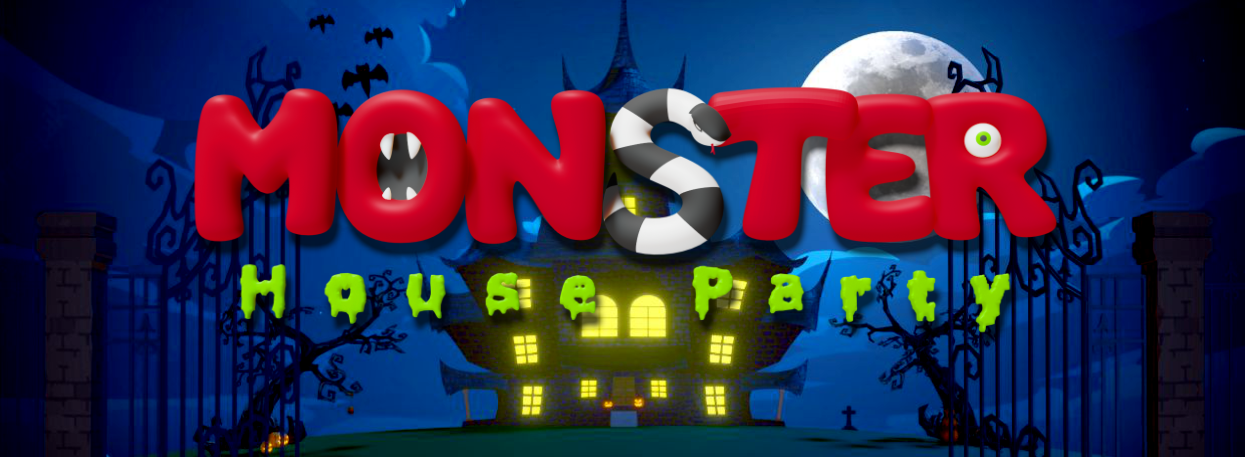Audio in video games is not just an optional extra or second thought but an integral component that affects gameplay, storytelling, player experience, and overall immersion.
We’ve spent some time this week setting up the basic audio system for Monster House Party. After investigating a few different options we have settled on implementing the powerful FMOD audio platform.
FMOD is a comprehensive sound system and audio platform widely utilized by game developers and multimedia professionals to enhance the sonic aspects of their projects. Developed by Firelight Technologies, FMOD offers a robust set of tools that enable creators to design and implement immersive and dynamic soundscapes for various applications, most notably video games. Its suite, consisting of both FMOD Studio and the FMOD API, boasts a user-friendly interface for sound designers to craft complex auditory interactions, while also providing programmers with a flexible and efficient API for integrating these audio experiences into software. FMOD’s versatility and integration capabilities with popular game engines like Unity and Unreal Engine make it a great choice for many in the industry, from indie developers to AAA studios.
Audio is a fundamental component of video games and plays a crucial role in enhancing the overall gaming experience. Here’s a breakdown of why it is import:
- Immersion and Atmosphere: Audio helps create an immersive world by providing a sense of place and atmosphere. The subtle sounds of wildlife in a forest, the hum of neon lights in a cyberpunk city, or the eerie silence of an abandoned spaceship can make the player feel like they’re truly “inside” the game world.
- Emotional Impact: Music and sound effects can amplify the emotional content of a scene. A poignant soundtrack can make a sad moment even more heart-wrenching, while a triumphant score can make achievements feel grander.
- Feedback and Player Interaction: Sound is often used as feedback for player actions. Whether it’s the clang of a sword, the sound of a jump, or the chime that plays when collecting an item, audio cues help players understand the consequences of their actions in real time.
- Narrative and Storytelling: Voice acting brings characters to life, adding depth to their personalities and making narratives more engaging. Moreover, background audio or subtle sound cues can hint at off-screen events or past stories, enriching the game’s lore without explicit exposition.
- Directional Awareness: In many games, especially in the first-person or third-person shooter genres, the ability to hear sounds from different directions can be crucial. Players use these audio cues to determine the location of enemies, threats, or points of interest.
- Accessibility: For players with visual impairments, audio can be an essential tool for understanding and navigating the game world. Features that emphasize sound can make the game more accessible to all players.
- Gameplay Mechanics: Some games use audio as a primary mechanic. For instance, rhythm games like “Dance Dance Revolution” or “Beat Saber” rely entirely on players responding to musical cues.
- Enhancing Realism: In simulation games or games that strive for a realistic portrayal, accurate and high-quality audio can significantly enhance believability. The roar of engines in a racing game, the chatter of the crowd in a sports simulator, or the ambient sounds of nature in a hunting game can make these virtual experiences feel alive.
One particularly tricky aspect in Monster House Party is how to direct specific sounds to specific audio devices. For example, the game can support a player in VR and up to 2 other players using controllers on a single, split-screen TV. We need a way to send audio specific to each player to a different device (eg either to the VR headset or to the left or right audio channel of the TV) FMOD features an option to select an audio output driver/device, so we are hoping that we can use it for our special game use case.
If we are unable to send specific audio to specific devices, our fallback plan is to generalize and mix all the audio out to all devices. This isn’t ideal but would still allow players to play the game together in an enjoyable way.
